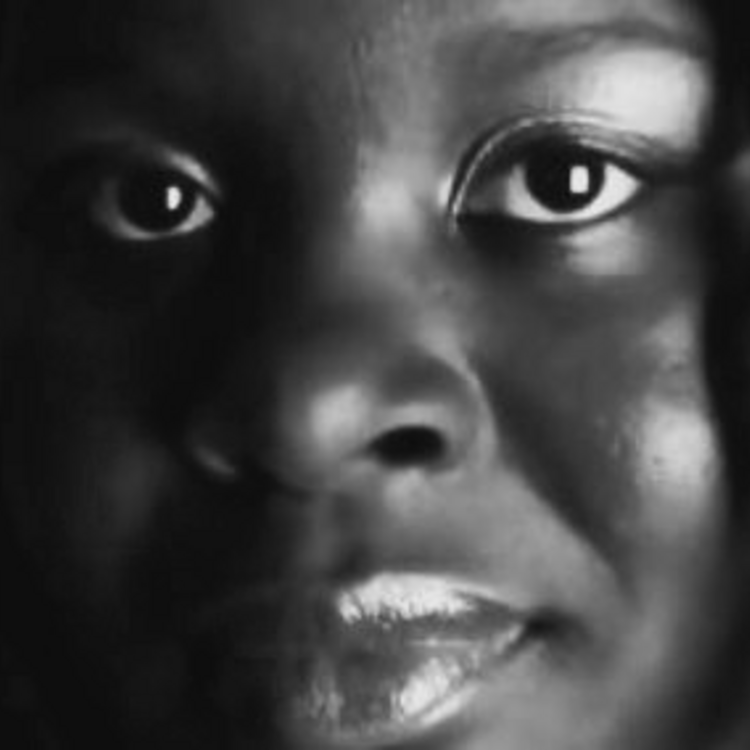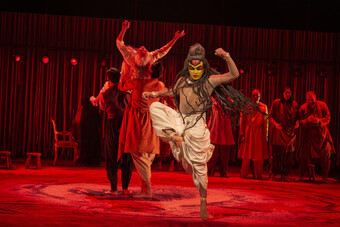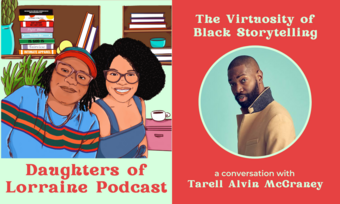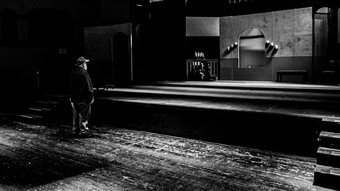The Real Danger
A Movement for Black Liberation Theatre
Written above the entryway to the temple space at the National Black Theatre is a quote from Dr. Barbara Ann Teer.
No longer am I the little me
I am no longer the small me
No longer am I the separate me
I am no longer the different me
I am free, free, free to become
One with my family.
Recently, this quote has become a mantra that reminds me creative solutions to repeated instances of injustice are born out of the collective strength, intelligence, and desires of a community. Dr. Teer’s legacy insists that freedom is a collective journey: one that requires sacrifice, dedication, spiritual-practice, and vision.
The power of collective action fuels NBT’s next production, Facing Our Truth: 10 Minute Plays on Trayvon, Race, and Privilege, taking place February 5-10. Facing Our Truth is the brainchild of Keith Josef Adkins, artistic director of New Black Fest. In addition to the plays, NBT will host a series of community-engagement actions designed to harness the creative brilliance of the people who will gather each show. These folks will not only serve as audience members, they will be creative catalysts and collaborators who will work together to build strategies to better support the safety, education, and empowerment of our youth.
NBT’s ambitious slate of actions along with the presentation of six challenging plays have led me to consider the role of black theater institutions in building a cultural strategy for collective liberation. With this in mind I ask, what are the risks and opportunities associated with activating and sustaining a community-based, black liberation theater movement?
The real danger in building a rigorous, black liberation theater movement is rooted in the reality that the powers that be won’t be able to contain it on stage or anywhere else. Why? Because the "rehearsal of the revolution" will cease and the revolution in the streets, hearts, minds, and sensibilities of the people will begin. It will be a new day.
It will demand a dismantling of the American project. It means the notions and hierarchies of who gets to make art, who is relevant, “professional,” community-based, etc, will be abolished. It will be a new day. It means funders may not find us as safe and witty. It means tenure and grant panels might repeatedly reject qualified and radical scholar/artists from accessing institutional support. It means the “dog and pony show” also known as auditions will be re-wired to affirm the humanity of actors.
It means we may never see our name in big lights, covering magazines, and accepting awards doled out by the dominant culture’s theater establishments. And keeping it real, many black theater-makers, including myself, find this a daunting and challenging possibility. The movement for a black liberation theater indeed asks us to invest our creative and human resources in the movement for diasporic black freedom.
Indeed, there will be and have been sacrifices but there are also opportunities. When we consider sustaining a black liberation theater movement, we acknowledge and leverage the resources of our community, we acknowledge the tools and strategies that inform our cultural independence. We move from a visionary space of infinite possibility and self-determination to create, challenge, and perform our stories on our terms.
Some artists choose to “make art for the people” instead of art with the people. Yet, they expect folks to fill their seats production after production. Do we ever ask the community what they want to see on stage? Are black theatres investing as much in community as they want community to invest in the institution? How do we build community processes that impact creative work but also lift up the values of the communities we want to populate our audiences?
One method is to use theatre spaces for more than viewing the “show.” Audiences step into the room with copious amounts of information and rich life experiences. The theater space presents a ripe opportunity for collective visioning. Collective visioning allows theater-goers the opportunity to do more than watch problems performed on stage but also begin to figure out creative solutions to those pressing issues.
During the run of “Facing Our Truth,” there will be a youth day. Youth day features a forum where young people have access to the mic to voice whatever they need to express, unfiltered. They will pose questions to each other and respond with asset-based suggestions to the issues impacting youth today. They will make recommendations to the adults in the room about what they want to see for themselves and our communities.
In Home Amiri Baraka explains, "Thought is more important than art. To revere art and have no understanding of the process that forces it into existence, is finally not even to understand what art is." Baraka is telling us that art is inextricably linked to consciousness, to daily life, to deep communication with the people who spark creative magic. Baraka is telling us that there is no art without critical understanding of the current and historical social and political nuances that make it manifest.
there is no art without critical understanding of the current and historical social and political nuances that make it manifest.
I direct The Ballad of Zimmerman for this production. Ballad is a difficult piece that asks viewers to step inside the mind of George Zimmerman, as he reveals his thoughts and motivations that led to the fatal shooting of Trayvon Martin. As a director, this is one of the most challenging pieces I have encountered. I did not want to tackle this subject matter. I did not want to step inside the mind a person who I feel is a monster. I did not want to lend my creative energy to telling a story of a person who I feel manipulated the justice system, at the expense of another black young man.
The rehearsals have been draining, yet full of necessary dialogue about “whiteness,” privilege, danger, culture of place, and injustice. It is through intentional dialogue and active listening that the cast has been able to fully commit to telling this story, a process that can be used to creatively respond to difficult situations in our communities.
NBT enlisted community healers and facilitators to help support the audiences who might want to discuss the issues unearthed in these performances. It is important to have skilled practitioners in the room so that people don’t feel alone in their attempt to understand all the issues explored in the plays. Just as Teer teaches us, we can be free to become a community. A community that works through moments of difficulty together is strengthened, as a result of the process.
Black liberation theater hinges on understanding what most impacts people. It values and lifts up moments of joy and triumph, as well. When we listen, we maximize our opportunity to see each other’s humanity and learn why a person or group of people behave in a certain way. It is the process of deep listening that cannot be glossed over, pared-down, or absent from the creative process, if the movement for black liberation theater is to continue to thrive.
I often find myself listening on one of the most prolific streets in the world, 125th Street. In truth, I’m a bit obsessed with 125th. I walk it often and learn something new about myself and people, every chance I get. I step onto 125th Street and enter a portal that collapses past, present and future. I imagine all the millions of people who have walked down this corridor of memory, culture, resistance, and evolutionary radical possibility before and with me.
I see the boldest examples of black beauty and the brute force used to subdue black and brown bodies. I see why we must insist on enlivening a black liberation theater movement so that we all may experience fully actualized and self-determined lives.
Brilliant political comedian, Katt Williams, has an infamous sketch called Tigers in the Zoo. In the sketch, he reminds audiences of the situation with zoo-goers climbing into tiger dens at the San Francisco Zoo. He explains that on-lookers were surprised when, upon entering the cage, the intruders were mauled by the tigers. The tigers were subsequently euthanized because of their actions. He shares that people interviewed by the news often didn’t understand why the tigers attacked them. Williams finally ends the bit by declaring, "If you don't understand what it feels like to be a tiger in a cage, you will never understand what it feels like to be a ni*** in America." In essence, we need theater from the perspective of the tiger and those who have done the work to understand the tiger’s motivations.
While the audience roars with laughter, Williams highlights a serious reality. His sketch speaks to what it means to simultaneously be an object of desire and disdain. Yet, each time I step onto 125th street, I witness black and brown men and women buck back at the system that seeks to oppress them with swagger unmatched. What audacity they must possess to traverse this stretch of concrete as if they are fully human, outrageously beautiful, and undoubtedly necessary. How dare they, in this neighborhood, this city, this country...on this planet continue to be resilient? It is this truth, this tension, this opportunity that makes black liberation theater a necessary imperative.
I am clear that black theater is expansive. I am clear that there are many avenues to enter, create and live a black theater aesthetic.
Honestly, “Facing Our Truth” would be incomplete without this series of community-engagement actions. It would be irresponsible to open up so many conversations without creating a safe environment for people to explore and heal. A road has been set before this generation of black theater makers; a road and a challenge to fight for justice with our spirits and our creativity. Sons and daughters of Baraka, of Teer, of Hansberry, of Shange, of Wilson, of Kennedy, of Hughes, of Wolfe... Who’s in?













Comments
The article is just the start of the conversation—we want to know what you think about this subject, too! HowlRound is a space for knowledge-sharing, and we welcome spirited, thoughtful, and on-topic dialogue. Find our full comments policy here
I!
For a moment I wondered if there was room for dance in this black liberation theater movement...and then I looked back at the last word. Movers make a movement. And so move I(we) shall.
Ebony, keep shining your light and speaking truth and THANK YOU for inviting us into your process! in community,
THANK YOU FOR WRITING SUCH WORDS OF TRUTH! I AM SO HAPPY TO SEE A NEW GENERATION BEING TRAIL BLAZERS FOR THOSE TO COME AFTER! CONTINUED BLESSINGS TO ALL OF US IN THE MOVEMENT! #ARTVISTS
Yes ma'am! I'm IN!
Thank you Ebony. For your work, for taking the time to inspire and insight difficult questions and truth. I hope this series of important plays has the impact and inspiration you seek. Respect.
THANK YOU for this engaging and thought-provoking article!
I had the extreme good fortune to study with Dr. Teer herself, and her commitment to both her people and the art of theatre is something which still influences my work today.
There is a Ghanian proverb that states: " Until the lion has a historian, the hunter will always be the hero". This is the position we artists of color and, indeed, the Black theatre, find ourselves in today. We keep waiting for the "hunter" (the established, institutionalized theatre) to recognize our valor, courage, dedication, experience, yet this is something we must do ourselves.
Like the Black liberationists before us, we must take our community under our OWN wing and artistically, feed, clothe and nurture OURSELVES. Our young artists are begging for our attention and engagement, but we're too busy trying to get our foot in the door of an artistic society that, despite all the protestations for "a more diverse theatrical landscape", will never fully acknowledge or respect our humanity, much less our right to speak the truth of that humanity in a voice or manner that is not sanctioned by them.
I thank you, Ms. Golden, for your willingness to not only take on the subject matter you and your cast are tackling, but for your committment to an honest exchange with the community for which you are producing the work. For Us, By Us has never been more apt.